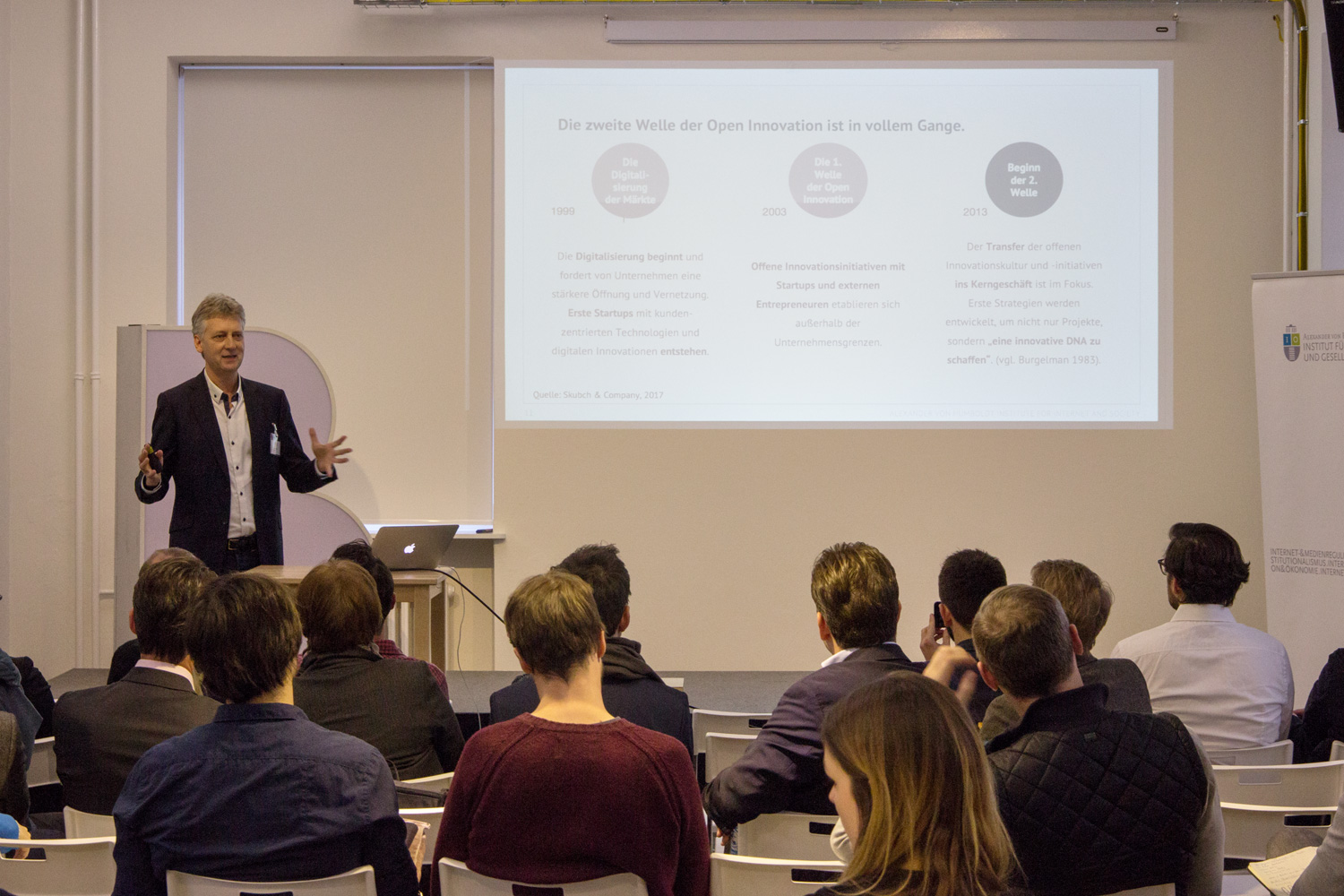Making sense of our connected world

“Startups and mid-sized companies: It’s time to collaborate.”
How can mid-sized companies and startups arrange a successful cooperation with win-win potential for both sides? This question was raised on Monday, 6th March at Spielfeld Digital Hub. As a part of the one year study How to collaborate with Startups? the Alexander von Humboldt Institute for Internet and Society (HIIG) & Spielfeld hosted a large event with experts from both worlds regarding success models for efficient collaboration between startups and mid-sized companies.
Founders from startups such as Adspert, CaterWings, DaWanda, Fab Lab Berlin, Infarm, Loopline Systems, Makers, POSpulse, Table of Visions, TripRebel, Urban Sports Club or Vjsual met executives and managers from Brenntag, Sky, Commerzbank, Francotyp-Postalia, Gebr. Brassler, VR Leasing, Wirecard, German Association for Small and Medium-sized Businesses, WestTech Ventures as well as other experts from Berlin School of Digital Business, D-Labs, FactoryBerlin, Projects & smallmatters and Skubch&Company.
During four workshops the identified stages of collaboration – Learn, Match and Partner – were discussed in small groups.

Figure: Framing of collaboration models: Learn, Match and Partner.
The Learn phase includes short-term models such as startup pitches, business plan competitions and hackathons. Match includes short-to-mid-term forms as accelerators or incubators whereas Partner combines long-term collaboration forms such as co-innovation, strategic alliances or joint ventures. Prof. Dr. Dr. Thomas Schildhauer (Research Director, HIIG), Moritz Diekmann (Managing Director, Telefónica NEXT) and Felix Anthonj (Founder, Flexperto) presented their experiences on open innovation within three keynotes. First results of our study will be published soon.
This is an article by Luise Springer and Martin Wrobel.
This post represents the view of the author and does not necessarily represent the view of the institute itself. For more information about the topics of these articles and associated research projects, please contact info@hiig.de.

You will receive our latest blog articles once a month in a newsletter.
Digital future of the workplace
Polished yet impersonal: The unintended consequences of writing your emails with AI
AI-written emails can save workers time and improve clarity – but are we losing connection, nuance, and communication skills in the process?
AI at the microphone: The voice of the future?
From synthesising voices and generating entire episodes, AI is transforming digital audio. Explore the opportunities and challenges of AI at the microphone.
Do Community Notes have a party preference?
This article explores whether Community Notes effectively combat disinformation or mirror political biases, analysing distribution and rating patterns.














